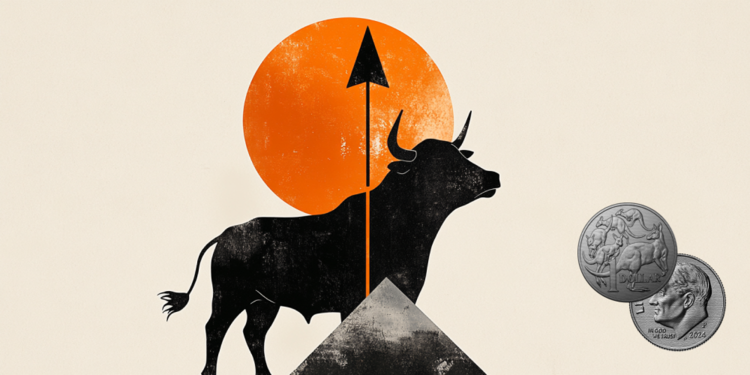- USD/CAD is trading steady around 1.3860 in the early Friday Asian session.
- The Fed decided to cut the interest rate by a quarter of a percentage point on Thursday.
- The Canadian employment report will be closely watched.
The USD/CAD pair holds near 1.3860 during the early Friday Asian session. The US Dollar faces some selling pressure following the US Federal Reserve’s interest rate decision. Later on Friday, the Michigan Consumer Sentiment leading index and the Fed’s Bowman speech will be on the spotlight, along with the Canadian employment report.
As widely expected, the Federal Open Market Committee (FOMC) cut its benchmark overnight lending rate by 25 basis points (bps) to a target range of 4.50%-4.75% at its November meeting on Thursday. . Fed Chair Jerome Powell said the central bank is seeking interest rate cuts as monetary policy remains tight, adding that the Fed will continue to evaluate data to determine the “pace and destination” of rates. interest rates as inflation has slowed, approaching the Fed’s 2% target.
The US Dollar (USD) declines after the Fed’s Powell offered no clear clues on the path of the short-term rate cut. According to CME Group’s Fed Watch tool, traders are pricing in a 75% chance that the Fed will cut rates again in December, up from 69% before the Fed’s rate decision.
Data released by the US Department of Labor (DoL) on Thursday showed that initial jobless claims rose to 221,000 in the week ending October 25. This figure was in line with initial estimates and was higher than the previous reading of 218,000 (revised from 216,000).
The Canadian employment report will be released later on Friday. The unemployment rate is expected to rise to 6.6% in October from 6.5% in September. Any sign of a weakening labor market in Canada could support the Bank of Canada (BoC) to make another large interest rate cut and weigh on the CAD.
“Further weakening of the labor market, mainly through higher unemployment, would increase the odds of a 50 basis point cut.” [en] a second consecutive meeting [del Banco de Canadá] in December,” said Benjamin Reitzes, managing director and Canadian rates and macroeconomics strategist at BMO Capital Markets.
The Canadian Dollar FAQs
The key factors that determine the price of the Canadian Dollar (CAD) are the level of interest rates set by the Bank of Canada (BoC), the price of oil, Canada’s main export product, the health of its economy, inflation and the trade balance, which is the difference between the value of Canadian exports and its imports. Other factors are market confidence, that is, whether investors bet on riskier assets (risk-on) or look for safe assets (risk-off), with the risk-on being positive for the CAD. As its largest trading partner, the health of the US economy is also a key factor influencing the Canadian dollar.
The Bank of Canada (BoC) exerts significant influence over the Canadian Dollar by setting the level of interest rates that banks can lend to each other. This influences the level of interest rates for everyone. The BoC’s main objective is to keep inflation between 1% and 3% by adjusting interest rates up or down. Relatively high interest rates are usually positive for the CAD. The Bank of Canada can also use quantitative easing and tightening to influence credit conditions, with the former being negative for the CAD and the latter being positive for the CAD.
The price of oil is a key factor influencing the value of the Canadian Dollar. Oil is Canada’s largest export, so the price of oil tends to have an immediate impact on the value of the CAD. Generally, if the price of oil rises, the CAD also rises, as aggregate demand for the currency increases. The opposite occurs if the price of oil falls. Higher oil prices also tend to lead to a higher probability of a positive trade balance, which also supports the CAD.
Although inflation has traditionally always been considered a negative factor for a currency, as it reduces the value of money, the opposite has actually happened in modern times, with the relaxation of cross-border capital controls. Higher inflation often leads central banks to raise interest rates, attracting more capital inflows from global investors looking for a lucrative place to store their money. This increases the demand for the local currency, which in the case of Canada is the Canadian Dollar.
The published macroeconomic data measures the health of the economy and may have an impact on the Canadian dollar. Indicators such as GDP, manufacturing and services PMIs, employment and consumer confidence surveys can influence the direction of the CAD. A strong economy is good for the Canadian dollar. Not only does it attract more foreign investment, but it may encourage the Bank of Canada to raise interest rates, resulting in a stronger currency. However, if economic data is weak, the CAD is likely to fall.
Source: Fx Street
I am Joshua Winder, a senior-level journalist and editor at World Stock Market. I specialize in covering news related to the stock market and economic trends. With more than 8 years of experience in this field, I have become an expert in financial reporting.







